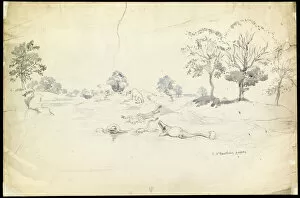Sauropsida Collection (#5)
"Sauropsida: A Journey through Time and Species" Step into the fascinating world of Sauropsida
All Professionally Made to Order for Quick Shipping
"Sauropsida: A Journey through Time and Species" Step into the fascinating world of Sauropsida, a diverse group of reptiles and birds that have roamed our planet for millions of years. From the majestic Tui to the graceful New Zealand Fantail, this captivating exhibit showcases both young and adult specimens in their natural habitats. Marvel at the striking Melanistic variant of the New Zealand Fantail on your left, its dark plumage contrasting against its vibrant surroundings. Nearby, observe the elegance of Cygnus atratus, commonly known as the black swan, gliding gracefully across tranquil waters. For those intrigued by falconry, explore an array of specialized equipment used in this ancient art form. Discover how these tools enable humans to work alongside magnificent creatures like Falcons and Peregrine Falcons - agile hunters capable of breathtaking speeds. Don't forget to visit our Natural History Shop where you can take home a piece of this remarkable journey. Find unique souvenirs that celebrate Sauropsida's rich diversity or perhaps choose something inspired by Huia - a now-extinct bird species once native to New Zealand. Immerse yourself further into prehistoric times with displays featuring Iguanodon and Hylaeosaurus - two iconic dinosaurs from Earth's past. Witness Archaeopteryx; often referred to as a bird-like dinosaur due to its feathered wings – an evolutionary marvel bridging reptilian ancestors with modern avian species. Transporting you back in time is The Wealden exhibit showcasing restorations within Crystal Palace Park. Visualize how these ancient landscapes would have appeared during Sauropsida's reign over 100 million years ago. Venture deeper into nature's wonders as you encounter Ahaetulla prasina – also known as Short-nosed vine snake – camouflaged amidst lush foliage. And don't miss out on observing Falco peregrinus; witness firsthand the incredible speed and agility of this magnificent peregrine falcon.
















































